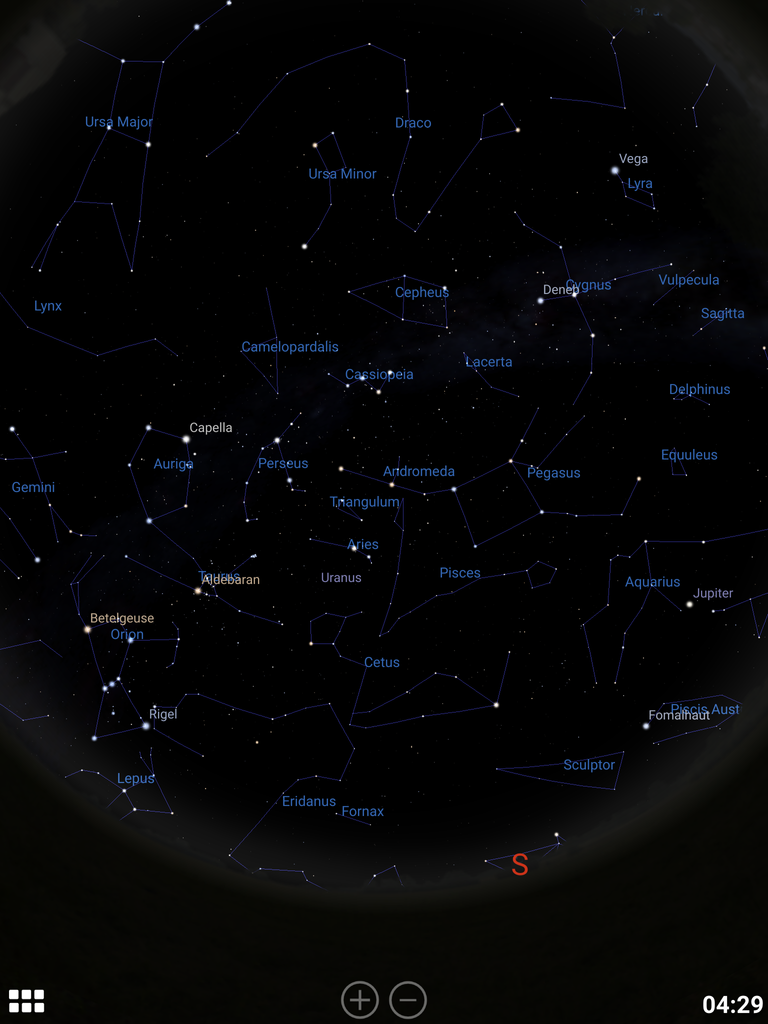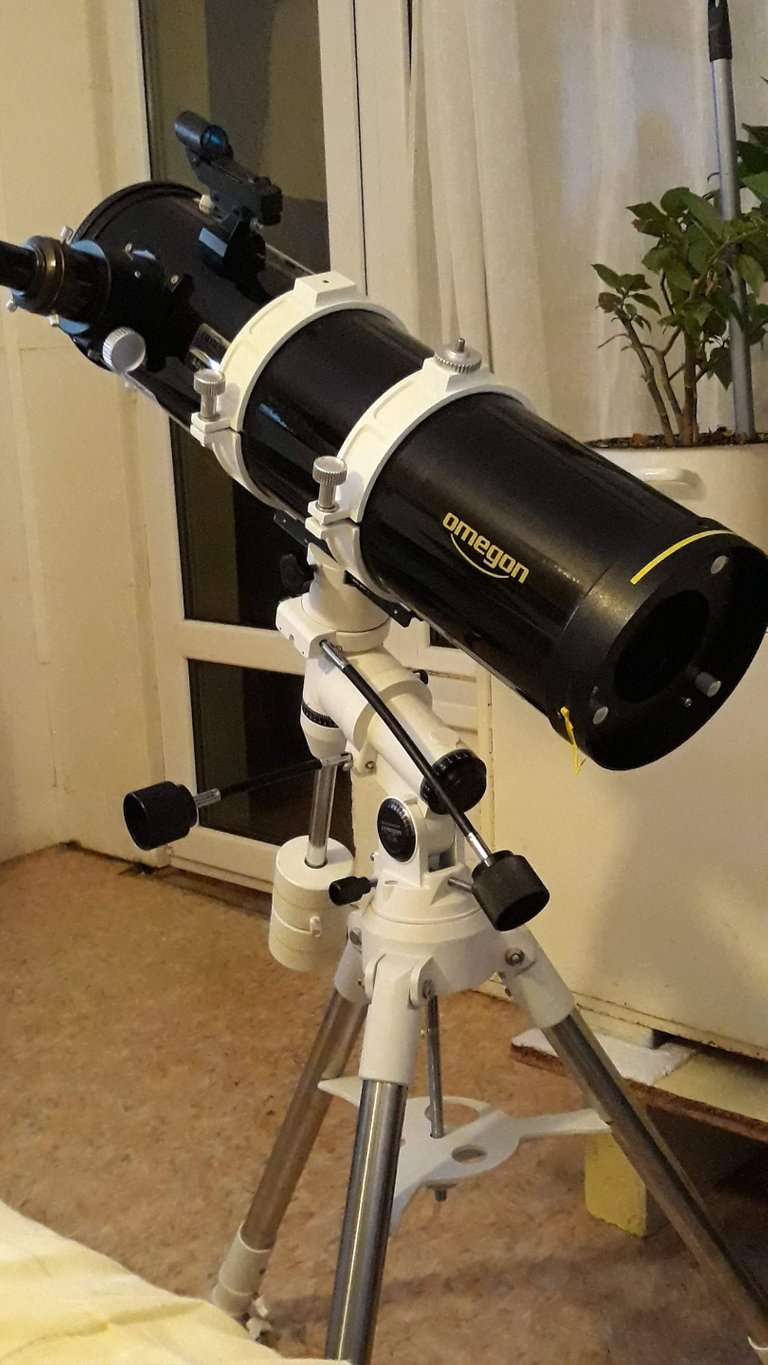My entry to Amazing Nature Contest: Thematic Challenge - STARS.
Come and join the challenge by @bucipuci in Amazing Nature Community. Check the link above for the rules.
I am a stargazer, my eyes are glued on the sky day and night. I must admit that I looked at the night sky not so often like before, but I would love to share with your my experience and how the sky attracts me.
Since I was little and I dreamt to be an astronaut, the sky attracted me always with its twinkling stars. Obviously I did not become an astronaut, but this might be a child's dream for many. However, I learned to recognize the major constellations I see above despite the light pollution of the town. To answer one of the questions @bucipuci asked in the challenge post - yes, we see different constellations in corse of time and now in summer time in the Northern hemisphere we see Capricornus, Sagitarius, Scorpius, to name a few. They are visible from my balcony, facing South.
Here is an image from an application called Stellarium. I will tell you about a bit further.

If you wonder how the constellations were named and how the people find a resemblance, you can draw lines between the dots and use your imagination. But let me help you again with my application and show you how the people see the figures in the sky.

This screenshots show the position of stars, planets and deep space objects from my place now, means on 18.8.2021 early night.
If we move backwards, then the picture changes and Orion is visible in early hours of the same day. The application allows to move forward as well. Then we will see how the sky will look on the next day/s.

I mention Orion, because this constellation is very easy to recognize by the three stars lined up. They are called the Orion belt.
Lets see how it looks without the images, just as it is if you look up and draw imaginary lines.

Under the belt, is the only nebula visible with naked eye - the Orion Nebula. If you look up you will see only the dots.

The nebula is a nursery of stars. New stars are born from remnants of a dead star.
Since the subject of the challenge is STARS, let's focus on them. I would like to show you two stars that are very bright on the sky - Betelgeuse and Sirius.

Betelgeuse is a red supergiant. What does it make so interesting? The astronomers observed strange dimming, that suggested the star will explode in supernova. Nobody knows when it will happen and if this dimming is actually a sign of expected event. Imagine if you see it, how amazing it will be. The star will be visible during the day, so bright it will be. But we may not be able to witness it and this giant to become supernova after thousand or even million years.
The second star that I love to watch is Sirius from the constellation of Canis Major.
When I bought the telescope I thought I could make pictures of the sky. I did mainly of the Moon, using the phone camera, attached to the eyepiece and later I bought camera that can be attached to the computer. It was a budget camera and apart from the lunar surface I tried the planets, but without much success. However, I tried to make a picture of Sirius and I remember I did a post where I showed that picture. But I have to share it again. I start searching the archive and actually I did a short clip which I converted to gif. It was in 2018, October. I add a label and here it is again.

Sirius is the brigthest star and can be seen in the Northern hemisphere in winter in its best.
When you look at the sky you may see planets that shine very bright and Jupiter is one of them. Right now along with Saturn, both planets can be seen on the sky.
My telescope may not be the best, but I am happy to observe the sky from home. It is not the same if you go outside of the town away from the lights, then much more can be seen. However I am glad that I can observe the lunar craters upclose, to see the rings of Saturn, the gas belts of Jupiter and its moons. I understand that photographing the sky requires better gear in terms of scope and camera. Perhaps I could try with the camera to make some experiment. However, astrophotography is just another level, much more complex and my telescope is not good enough. The post process seams rather complex too. So, I will continue to admire the view of the night sky with naked eye or through the telescope.

This is my reflector telescope.
How to find the celestial objects and recognize them?
There are many programs and applications that can help you. The images I used for this post are from Stellarium application, that I find useful as it shows what is on the sky at real time. Easy to navigate and search. My telescope is simple as there is no tracking device and I rely on my knowledge where to point and to see what I am looking for. When in doubt, I consult Stellarium.
ISS - The International space station
And there is something that you can also see on the sky with naked eye. The International space station is bright dot moving very fast. Again there are different ways to track it. Just google it and you will see where it is at this very moment or when the station will be above you. I used to subscribe to https://spotthestation.nasa.gov/ and to receive notifications on my e-mail when the station will pass over. Always in awe while watching the station, but never managed to see it through the telescope, too fast.
The sky in the town is showing less but still enough to keep my interest. The distances are mind blowing and what we see like small dots on the sky are giant stars or even galaxies. All is in motion and we are drifting in the vast universe.
The night is cool and sky is clear. Just perfect for stargazing. I am off to see what is on the sky tonight.

banner created by @barbara-orenya


Thank you for viewing.
If you like to share your thoughts you can leave a comment.



It is good that you are a faithful observer of the sky, this application that you name is excellent.
I really appreciate this information. Great job
I wish you a beautiful afternoonHello dear friend @nelinoeva good afternoon
Thank you very much @jlufer! Glad you like my post.
We appreciate your work and your publication has been hand selected by the geography curation team on behalf of the Amazing Nature Community. Keep up the good work!
Thank you for the appreciation.
Very good post nely! The constellations are very interesting but it is quite annoying when you live in the city you must carry your large telescope to secluded places of light pollution, in fact it is something that takes a lot of work! That is why this practice is not only about putting the eye in an eyepiece! Lucky! !discovery 10
Thank you very much for your comment. You are absolutely right, this is a lot of work if you wish to carry big telescope away from the town. 😀
But I still enjoy to explore the Moon.
This post was shared and voted inside the discord by the curators team of discovery-it
Join our community! hive-193212
Discovery-it is also a Witness, vote for us here
Delegate to us for passive income. Check our 80% fee-back Program
Thank you for entering the competition.
This is a great article with valuable information.
Do you see the constellation Orion early in the morning on the southeastern horizon? So it is necessary to start preparing in autumn and winter :-)
It is a pleasure to enter the competition.
Yes, Orion appeared in early morning and reminds us that the summer will be over.
Yes. I also saw Orion this morning. In the northern hemisphere, it is a sign of the coming autumn and winter. I wonder which constellation or star shows this in the southern hemisphere :-)
Your content has been voted as a part of Encouragement program. Keep up the good work!
Use Ecency daily to boost your growth on platform!
Support Ecency
Vote for Proposal
Delegate HP and earn more
Thank you so much for your kind support.
Good post I like very much⭐🌟💫✨🌌🌃🔭🌌🌃
Thank you kindly, glad you like it.
Great reminder how very small we are within a big picture, great to see the Northern Hemisphere night of stars.
Owning a great telescope a good investment @nelinoeva for many nights to gaze in wonder.
Oh, we are so insignificant compared to the vastness of the universe.
And yet I am still in awe watching the night sky. Now the full Moon is so bright and beautiful.
Thank you so much for your lovely comment.
Moon was behind cloud early evening, totally cleared for a showing around 8 pm then between clouds again at 11 pm last night. Always enjoy watching the night sky! Have a love new week Neli.
How interesting Neli. Thanks for sharing. The skies do hold many mysteries ~ I’ve heard theories that aliens from Sirius may have visited our planet eons ago and taught skills to our ancestors.
Thank you Jo for stopping by.
The sky above shows just a fraction of what really is over there. The images from big telescopes are absolutely stunning.
There are theories about aliens, who knows if they are true or not. They must've known to bend time and space to travel between the stars.